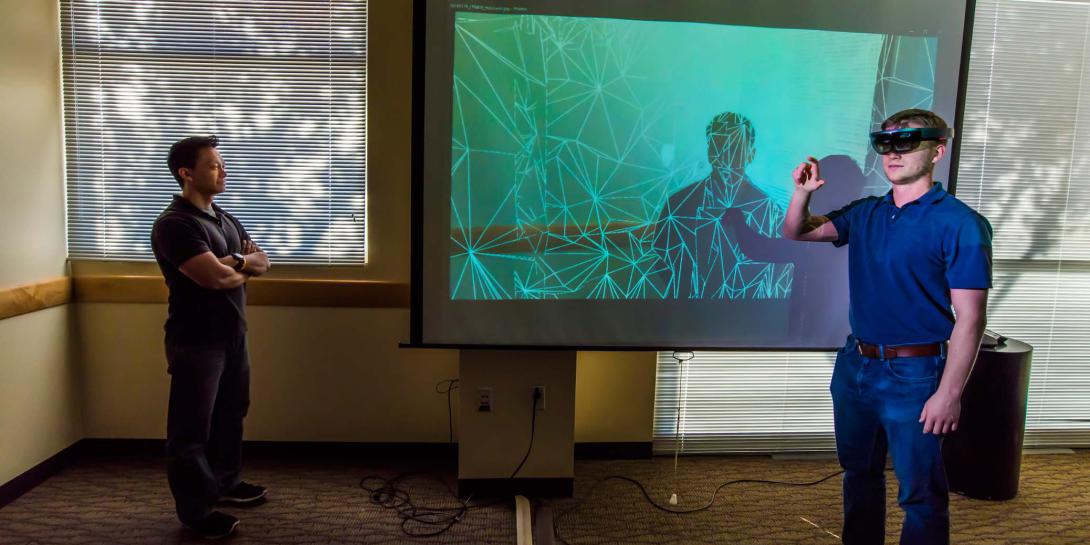Nuclear Materials Training with a Virtual Twist
Sandia National Laboratories scientists have adapted serious gaming technology and methods to enhance nuclear materials physical security training. Using prerelease stand-alone augmented reality headsets, the approach could revolutionize nuclear security engineering training.
Sandia National Laboratories scientists have adapted serious gaming technology and methods to enhance nuclear materials physical security training. Using prerelease stand-alone augmented reality headsets, the approach could revolutionize nuclear security engineering training.
Computer scientists Tam Le and Todd Noel added a virtual twist to Sandia’s Integrated Security Facility to enhance a three-week international training course. The lessons focus on building a physical protection system for a hypothetical nuclear power reactor or storage facility. With the help of gaming technology, students can now peer through walls to see the processes required in handling and protecting nuclear material without getting their hands dirty.
For more than 30 years, the mock facility was nothing more than a paper floor plan, but several years ago Le created 3-D models of the hypothetical nuclear facilities to enhance the students’ understanding of the layout. The same day the team received the augmented reality hardware, Noel created a camera placement tool that enables users to add virtual sensors and cameras to see their fields of view in real-time.
Augmented reality enables students to see virtual characters handling material, including how they put it into and pull it out of the system and how the material flows. As a result, trainees can better understand the vulnerabilities and where materials can be lost.
“With this technology, we can actually show what is going on behind the walls,” Le explains. “The application of these new holographic technologies will shape the future of our visualization, training and analysis capabilities and is only limited by our creativity.”
Dominic Martinez, manager of International Nuclear Security Engineering at Sandia, explains that physical security of nuclear materials “goes beyond guards, gates and guns” and includes engineered solutions and complex systems designed to protect against theft and sabotage.
“It is important to educate others on how to properly secure nuclear materials around the world,” Martinez says in a statement. “These professional development courses help minimize the learning curve and bring everyone up to international standards and best practices as fast as possible.”





Comments